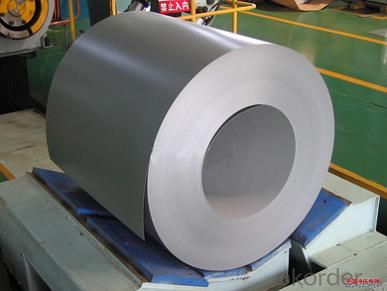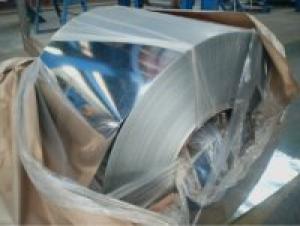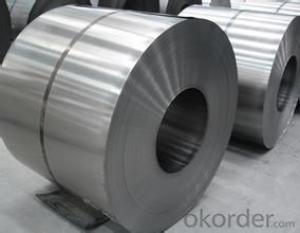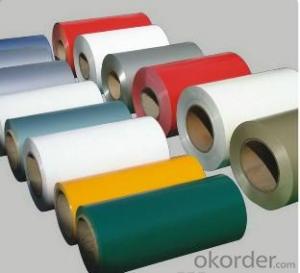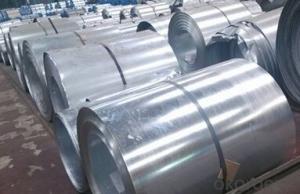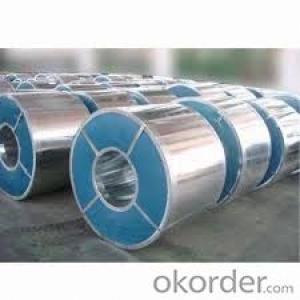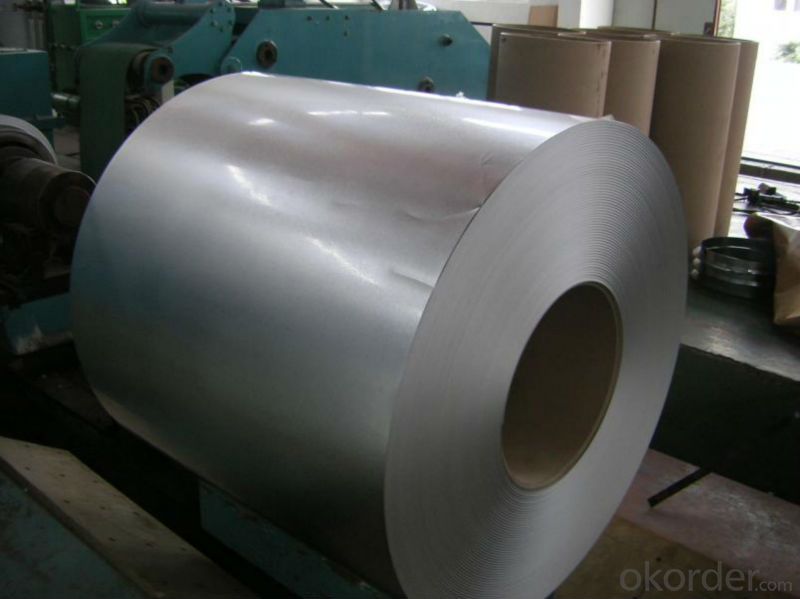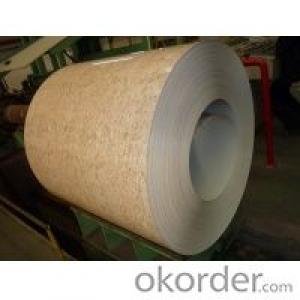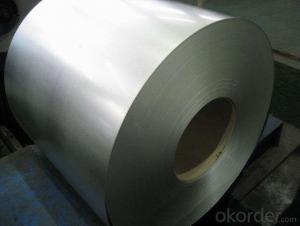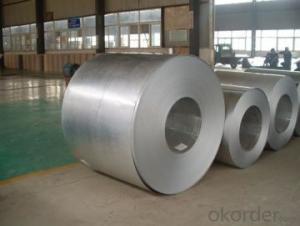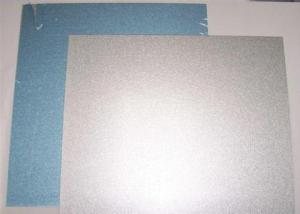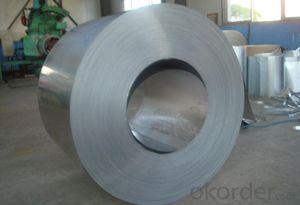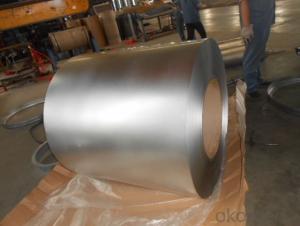Gavalume steel coil
- Loading Port:
- China Main Port
- Payment Terms:
- TT OR LC
- Min Order Qty:
- -
- Supply Capability:
- -
OKorder Service Pledge
Quality Product, Order Online Tracking, Timely Delivery
OKorder Financial Service
Credit Rating, Credit Services, Credit Purchasing
You Might Also Like
Packaging & Delivery
| Packaging Detail: | Standard export and seaworthy packing. (waterproof paper and metal sheet protection with fluted rings at inner and outer edges, 4 eye bands and 4 circumferential bands fasten the coil) |
| Delivery Detail: | In 25 days after we got the advance payment or the formal LC |
Specifications
GL Steel Coil
Thickness: 0.16-0.80mm;
Coils width: 700-1250mm
Coils weight: 3.0-8.0MT
- Q: What is the AISI grade of mild steel that is the most magnetic? What magnetic steels are the cheapest and easiest to buy?
- Silicon steel is the most magnetic material for making into transformer cores and motor cores. It contains 1.25 to 2.5% Silicon. Silicon steel is usually rolled to 2mm plates as lamination material. Iron may be magnewtic but it has low resistivity. With high silicon alloyed to iron resistivity is increased and core and hysteres are losses reduced. Important silicon steels are designated as AISI M15, M19,M22 and M36. In ASTM, these steels are designated 36F15, 36F18 and many more.
- Q: How are steel coils used in the production of electrical connectors?
- Steel coils are used in the production of electrical connectors as they are often used as a raw material for manufacturing the connector pins. The steel coils are typically shaped and cut to specific dimensions to create the pins, which are then inserted into the connectors to establish electrical connections.
- Q: I recently got in a car accident with a steel mailbox, on a snowy day. I was wondering if i can do anything since the steel mailbox caused my car to be totaled. Otherwise it would have been fine and would have suffered only minor damage. Anything I can do here to maybe get some money back? Thanks!
- That's exactly what happened last winter where I worked. The driver's insurance (it was a late model SUV) paid for the damage to the vehicle and to our mailbox. The 4 inch steel post really bent the SUV.
- Q: How are steel coils inspected for formability using forming tests?
- Steel coils are inspected for formability using forming tests by subjecting them to various forming processes such as bending, stretching, or deep drawing. These tests help evaluate the ability of the steel to undergo deformation without cracking or tearing. The formed samples are then inspected for any defects or imperfections, such as surface irregularities, fractures, or wrinkling. This allows manufacturers to assess the quality and suitability of the steel coils for specific applications, ensuring they meet the required standards of formability.
- Q: Fallout 3 take it back quest?if i am in the rotunda and dont have broken steel installed yet so i cant leave if i instal it will i be able to continue the game even if im seconds away from the end without it Additional Detailsi know it continues on but im not sure if it will let me cause i got this far without it 1 objective away from finishing the quest idk if it will change that little bit so i can continue (ps3)already in the purifier place kill col. autum liek i said just gotta do the code thing to it idk if im to far for broken steel to effect this save file
- Yes. The Broken Steel add-on goes automatically where ever you are. The thing is, I would like stand around the control room for a little while until the Broken Steel add-on is completely downloaded (Basically pop A LOT of rad-x and radaway). You should see a pop-up message saying that Broken Steel is installed and the level cap is now at 30.
- Q: How do steel coils contribute to the automotive industry?
- Steel coils play a significant role in the automotive industry by contributing to the manufacturing of various components and structures in vehicles. These coils are made from high-quality steel and undergo a series of processes, including hot rolling, cold rolling, and annealing, to achieve the desired properties. One of the primary uses of steel coils in the automotive industry is in the production of body panels and frames. The high strength and durability of steel make it an ideal material for these applications, providing structural integrity and protection to the vehicle. Steel coils are transformed into sheets through a stamping process, allowing manufacturers to create complex shapes and designs for different vehicle models. Moreover, steel coils are also used in the production of suspension systems, including springs and shock absorbers. The elasticity and resilience of steel allow these components to withstand the constant impact and weight of the vehicle, ensuring optimal performance and comfort for the driver and passengers. Additionally, steel coils are utilized in the manufacturing of engine components, such as crankshafts, camshafts, and cylinder heads. These components require the strength and thermal resistance that steel provides, ensuring the efficient operation and longevity of the engine. Furthermore, steel coils are crucial in the production of exhaust systems, which play a vital role in reducing emissions and noise levels. Steel's resistance to heat and corrosion make it an ideal material for exhaust pipes, mufflers, and catalytic converters, ensuring their durability and functionality. Overall, steel coils are indispensable in the automotive industry as they contribute to the production of various components and structures that are essential for the performance, safety, and longevity of vehicles. The high strength, durability, and versatility of steel make it a preferred material choice, enabling manufacturers to create reliable and efficient automobiles.
- Q: How are steel coils used in the manufacturing of safety systems?
- Steel coils are commonly used in the manufacturing of safety systems such as airbags and seat belts. The steel coils are formed into springs which provide the necessary tension and force to ensure the proper functioning of these safety devices. The coils are carefully designed and integrated into the system to enhance its performance and reliability, ultimately helping to protect occupants in the event of a collision.
- Q: How are steel coils used in the manufacturing of electrical equipment?
- Steel coils are commonly used in the manufacturing of electrical equipment as they serve as a key component in transformers and motors. These coils are typically made of high-quality steel and are tightly wound to create an electromagnetic field when an electric current passes through them. This allows for efficient power transmission, voltage regulation, and electromagnetic induction, which are essential functions in various electrical devices.
- Q: What is the current value of steel? Is it expected to increase in value?
- They'd never be worth much for their steel content, likely always less than face value. They might be worth a premium as coins, but not anything you'd call an investment.
- Q: What are the common coil handling challenges?
- Some common coil handling challenges include the difficulty in safely lifting and moving heavy coils, ensuring proper alignment and positioning during handling, preventing damage to the coils or surrounding equipment, and efficiently managing coil storage and retrieval.
Send your message to us
Gavalume steel coil
- Loading Port:
- China Main Port
- Payment Terms:
- TT OR LC
- Min Order Qty:
- -
- Supply Capability:
- -
OKorder Service Pledge
Quality Product, Order Online Tracking, Timely Delivery
OKorder Financial Service
Credit Rating, Credit Services, Credit Purchasing
Similar products
Hot products
Hot Searches
Related keywords



